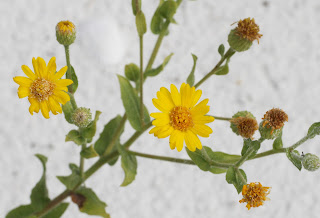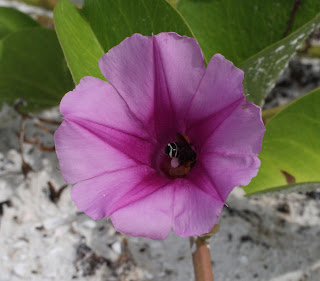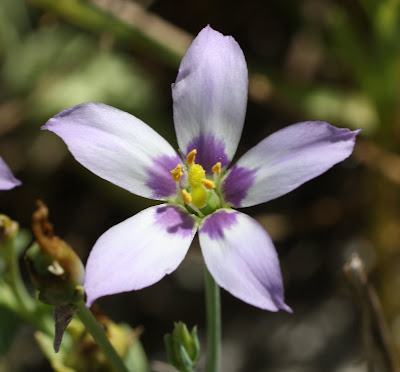The Camphorweed (Heterotheca subaxillaris) is well established on Fort Myers Beach where it plays an important ecological role. Like the Railroad Vine and the Sea Oat, the Camphorweed's taproot contributes to beach stability. The flowers are about an inch in diameter with slender overlapping yellow petals surrounding an orange-yellow disk that are clustered at the ends of branch stems. Blooming time is in the late summer and early fall. The leaves are broader at the base of unbranched main stems. The plant is odiferous. Crush the leaves between your fingers and note the strong and aromatic scent of Camphor.
The Camphorweed is widely distributed in Florida. It can be found in the dry sandy soils of Florida's pinelands and coastal dunes. It is a drought resistant and salt tolerant plant that can survive on nutrient poor soils. It gives all the appearance of an ordinary weed. Perhaps for some it is a plant that should be promptly pulled out of the ground. Before passing judgment on the Camphorweed please take the time to observe the fragile beauty of its flowers and remember that it is a member of that prominent flower family, the Asters.



